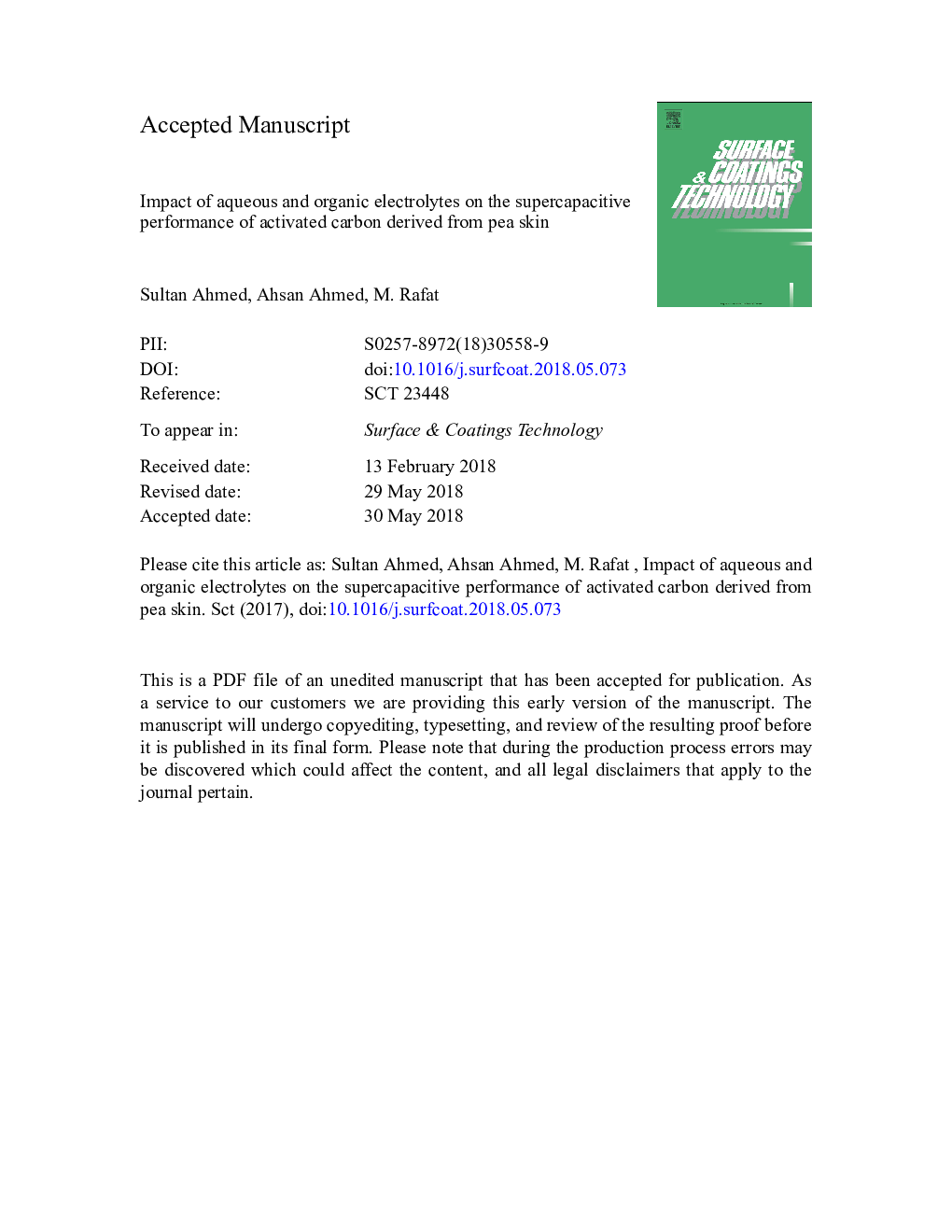| Article ID | Journal | Published Year | Pages | File Type |
|---|---|---|---|---|
| 8023393 | Surface and Coatings Technology | 2018 | 35 Pages |
Abstract
The present work reports the synthesis of porous activated carbons (AC) from pea skin; employing eco-friendly approach. The method involves chemical activation using suitable activating agent and the process of carbonization. The textural properties of synthesized product were studied using standard techniques of field emission scanning electron microscopy (FESEM), N2 adsorption-desorption isotherms, Raman spectroscopy, X-ray diffraction (XRD) and thermo-gravimetric analysis (TGA). It was ascertained that the synthesized product is thermally stable and possess crystalline, porous carbon structure. For evaluating the electrochemical performance, AC based electrodes were tested in selected aqueous (1â¯M H2SO4, 1â¯M Na2SO4 and 6â¯M KOH) and organic (1â¯M LiClO4 in Ethylene Carbonate/Propylene Carbonate (1:1 by volume)) electrolytes, using standard electrochemical techniques. The highest specific capacitance (192.7â¯Fâ¯gâ1) was found in acidic aqueous medium, while high magnitudes of specific energy and power (17.86â¯Whâ¯kgâ1 and 57.33â¯kWâ¯kgâ1 respectively), were observed for organic electrolyte. Also, AC based electrode exhibited good cyclic stability with ~85% capacitance retention for more than 5000â¯cycles. It is therefore expected, that the synthesized AC can be fruitfully used for supercapacitor applications.
Related Topics
Physical Sciences and Engineering
Materials Science
Nanotechnology
Authors
Sultan Ahmed, Ahsan Ahmed, M. Rafat,
